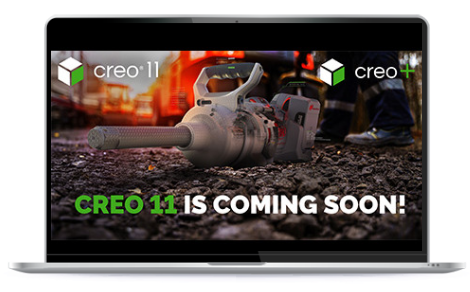Your Cart is Empty
Recent Articles
- ZBrush Tip: Essential Guidelines for Preparing ZBrush Models for 3D Printing
- V-Ray Tip: Enhancing 3D Renders with V-Ray's Layered Material: Tips and Best Practices
- AutoCAD Tip: Maximizing Efficiency with AutoCAD DesignCenter: Tips for Managing and Reusing Drawing Components
- Revit Tip: Enhancing Team Collaboration in Revit with Efficient Workset Implementation and Management
- Rhino 3D Tip: Maximizing Rhino 3D for Jewelry Design: Expert Tips for Precision and Creativity
- Unlock Seamless Design: Get Started with Enscape for SketchUp 2024
- Bluebeam Tip: Efficient Document Revision Management for Large Projects with Bluebeam Batch Slip Sheet Feature
- Cinema 4D Tip: Mastering the Node-Based Material System in Cinema 4D: Essential Tips for Advanced Rendering
- ZBrush Tip: Enhancing ZBrush Sculptures with KeyShot: Tips for a Streamlined Rendering Workflow
- V-Ray Tip: Crafting Realistic Car Paint Materials in V-Ray: Techniques for Enhanced Automotive Visualizations
Introducing Creo 11: Elevate Your CAD Experience with New Electrification, Composites, and Advanced Manufacturing Tools
March 28, 2024 3 min read


In the realm of computer-aided design (CAD), continuous innovation is not just desired; it is expected.
Engineers, designers, and manufacturers are always seeking tools that can streamline their processes, enhance their designs, and improve overall productivity.
PTC's release of Creo 11 stands at the forefront of CAD evolution, offering a suite of advancements that cater to the dynamic needs of today's design professionals. The introduction of Creo 11 is a leap forward for those involved in the design and manufacturing industries.
This latest iteration promises an enriched CAD experience, bolstered by an array of new and refined features, specifically targeting areas such as electrification, composites, model-based definition, and advanced manufacturing.
The essence of Creo 11 lies in its ability to harmonize power and simplicity, ensuring that users can achieve top-tier design results without undue complexity. One of the core strengths of Creo 11 is its emphasis on an unbroken design workflow.
The software eliminates the need for cumbersome export/import steps, fostering a seamless transition from one design phase to the next. When design requirements undergo inevitable changes, Creo 11 adapts with ease, allowing for swift updates to models to mirror new conditions.
The usability and productivity improvements within Creo 11 are not just incremental; they are transformative.
The software now embraces multibody design concepts, a boon for those working with designs that incorporate multiple sheet metal and regular bodies.
The ability to design sheet metal parts within the context of associated assemblies is a significant time-saver and error-reducer.
The Shrink-wrap feature has been enhanced, streamlining the process of transferring solid bodies from parts of an assembly into a single multibody part. This innovation expedites workflows involving complex designs and supports more efficient collaboration and file management.
The focus on electrification is particularly noteworthy in Creo 11. As industries pivot towards electric-powered solutions, the need for specialized design tools has never been greater. Creo 11 rises to the challenge, delivering the capabilities required to create, optimize, and validate electromechanical and battery-powered systems.
Composite materials are revolutionizing multiple industries, from aerospace to automotive, and Creo 11 has not overlooked this trend. The software includes enhanced tools for the design and manufacturing of composite structures. These enhancements address the unique challenges posed by composite materials, such as layup strategy optimization and weight reduction without compromising strength.
Model-Based Definition (MBD) has also received a substantial boost in Creo 11. With expanded MBD tools, users can now embed more detailed design information directly within the 3D model. This functionality aids in reducing reliance on traditional 2D drawings and supports more efficient communication across teams and throughout the product development lifecycle.
Simulation-Driven Design and Generative Design are hallmarks of modern CAD systems, and Creo 11 excels in these domains. Designers can leverage simulation insights early in the design process, guiding decisions that lead to innovative and performance-optimized solutions. Generative design capabilities enable the exploration of numerous design iterations, harnessing computational power to discover new and efficient forms. Advanced manufacturing tools are the final piece of the Creo 11 puzzle, indicative of PTC's commitment to not just design but also production excellence. The software caters to the latest manufacturing techniques, including additive manufacturing, ensuring compatibility with state-of-the-art production technology.
For those interested in integrating Creo 11 into their design process, NOVEDGE provides an array of compatible software solutions. This includes PTC products that further extend the power of Creo for simulation, product lifecycle management, and more. Additionally, users may explore tools like MathCAD for engineering calculations.
In conclusion, Creo 11 is not just a CAD software release; it is an invitation to elevate one's design experience to new heights. With its focus on electrification, composites, and advanced manufacturing, Creo 11 is poised to become an indispensable tool for design professionals looking to stay ahead in a competitive market. For more information about the newest and most advanced design software technology, contact our sales team at NOVEDGE, where expertise meets cutting-edge solutions.
Also in Design News

ZBrush Tip: Essential Guidelines for Preparing ZBrush Models for 3D Printing
April 26, 2024 2 min read
Read More
V-Ray Tip: Enhancing 3D Renders with V-Ray's Layered Material: Tips and Best Practices
April 26, 2024 2 min read
Read MoreSubscribe
Sign up to get the latest on sales, new releases and more …



